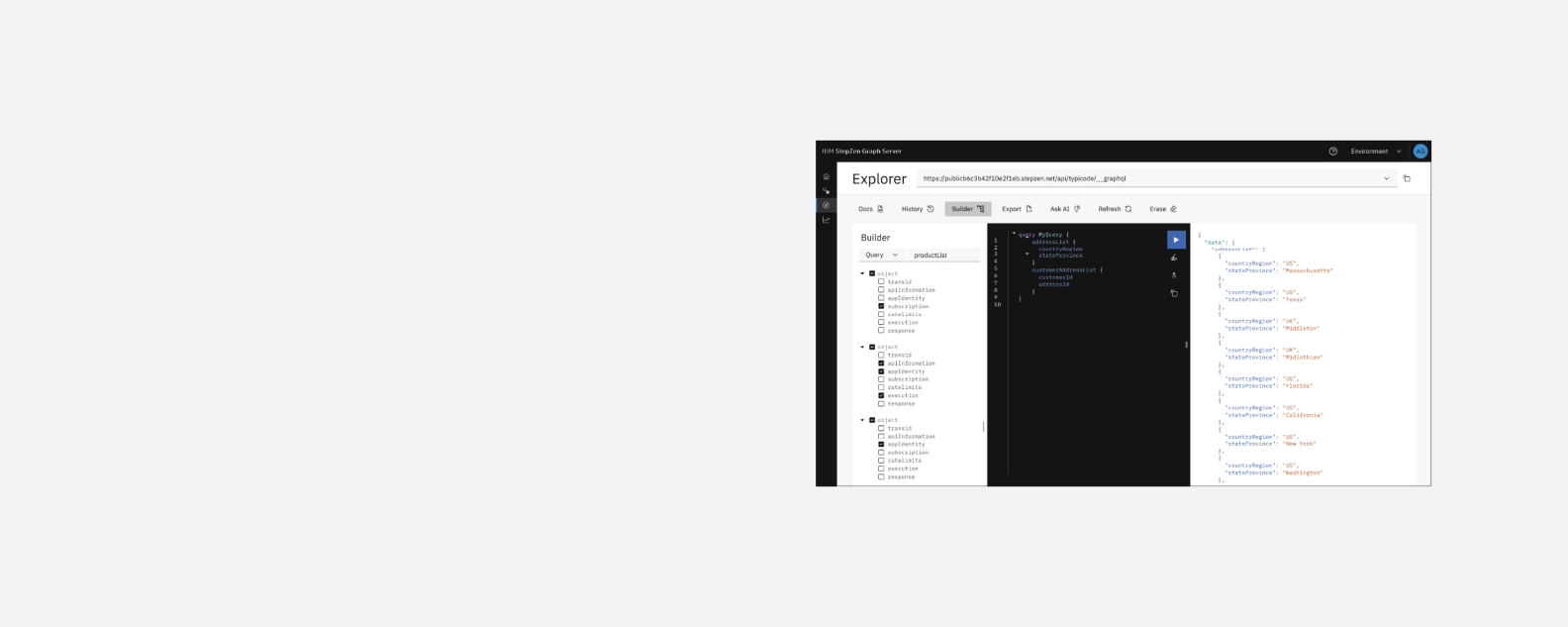
The rising adoption of hybrid cloud has resulted in data stored everywhere, from data warehouses, lakes and lakehouses, as well as across different clouds and on-prem environments. APIs are the essential connector between different data sources and applications, resulting in more APIs being developed than ever before. One of the fastest growing API formats in recent years is GraphQL. With GraphQL, companies can iterate faster on their APIs and application development by developing a unified GraphQL API layer for all their data.
IBM API Connect® makes it easy to build and deploy a production-level GraphQL API in minutes. Simply provide the connection details of your data source and a secure and optimized GraphQL API will be generated instantly. You can also combine (or federate) data from multiple sources, such as SQL, NoSQL, REST, SOAP and other GraphQL APIs. GraphQL APIs built in API Connect are secure and high performing by nature, since they run in an in-memory, Golang-based GraphQL engine.
Unlock your data with GraphQL and IBM API Connect
Pair API development with API management for more control and optimization of your APIs.
GraphQL is great at providing easy and flexible access to your data, wherever it resides. A GraphQL API responds with exactly the information that is requested– wherever it resides–and the end user doesn’t even need to know which sources the GraphQL API is retrieving the data from. This ease of creation and usage is great when you’re building new APIs and want to get started quickly. But once you’re ready to scale, you need to take into account factors like performance and cost, especially as it relates to data sources hosted in the cloud. For example, a GraphQL query pulling from a relational database creates a heavier load when joining tables, which can slow the response time. Or a GraphQL query that calls a serverless function, you get billed by your cloud provider. This is when you bring in API management.
The management capabilities in API Connect allow you to control how the user is interacting with your API. You can apply rate limiting to control the performance and costs involved in calling the API. API Connect also provides features like a Developer Portal so you can find, test and share APIs internally and externally to your organization.